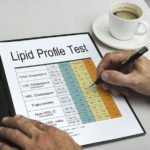By David Blyweiss, M.D., Advanced Natural Wellness
July 19, 2019
I am annoyed at headlines that shout about how so many more people could “benefit from taking statins”…that it should be put in the water supply even.
Even worse, are the ones that declare doctors are falling down on the jobs by not prescribing more of them. “Physicians fail to offer statins to more than half of eligible patients,” screams one headline.
I am equally disenchanted by the number of patients who THINK they should be taking a statin drug to get rid of all of their “bad” cholesterol.
In fact, ask anybody you know what they think the biggest threat to their heart is. I’ll bet almost every single one of them will say high cholesterol.
This is a multibillion dollar business swindle of scandalous proportion!
So please… let me fill you in on a few facts.
There is no such thing as “good” or “bad” cholesterol. In fact, there aren’t even two types of cholesterol. There are only low density lipoproteins (LDL) and high density lipoproteins (HDL). Neither of these are cholesterol. They’re just a transport system.
LDL drops cholesterol off where it’s needed. HDL collects any excess cholesterol that was delivered, and carries it back to the liver. But the fact is, they both carry the exact same cholesterol throughout your body.
And let me be clear on this. Your body needs LDL particles to deliver cholesterol to your cells. That’s where the cholesterol is used to maintain normal cell function. It’s used to make hormones, digest fats and absorb nutrients. It supports a healthy metabolism.
Nearly half of all patients with dangerous plaque build-up in their arteries have “normal” levels of cholesterol. Not only that, but awhile back an analysis of 136,905 people hospitalized with coronary artery disease found that nearly 75% of the patients had optimal or nearly optimal LDL levels (<130 mg/dL.)
Now, statin drug makers would have you believe that numbers like these mean only one thing: that cut-offs for healthy LDL levels need to be reduced.
But guess what?
If your LDL levels drop too far, it can come with some equally serious health consequences, such as an increased risk of cancer, Parkinson’s and hormonal imbalances.
Statin drugs carry scary side-effects. Confusion and memory loss, serious liver problems, cataracts and muscle damage are all significant concerns when it comes to using statins.
To top it off, your chances of developing new onset type 2 diabetes skyrockets with these meds. The risk of developing this metabolic disease is just over two times higher in any statin user… and more than three times higher among those taking statins for two years or longer. This is true regardless of the statin class or dosage.
So why don’t we take statins off the table right here and now, and take a look at where your real circulatory concerns lay.
Forget Cholesterol
and Look at this Instead
While the thing we call “LDL cholesterol” isn’t your enemy, low density lipoproteins aren’t all created equal.
Sometimes they are big, fluffy, bouncy and harmless. Other times they are small and dangerous. These small, dense particles are the ones you have to worry about. They can easily enter your arterial walls and become trapped. This sets off a chain of events that result in blockages and narrowed arteries.
The World's Quickest Solution for Ending Prostate and Urinary Misery
This has recently been revealed to be one of the only real breakthroughs in prostate health.
The seeds of a strange fruit (sometimes called "Chinese Apples") hold powerful phytonutrients that are a revolution in prostate health.
In fact, UCLA and Veterans Administration research have now proved this to be true.
Not only that, but it may be the worlds quickest solution for ending prostate misery.
Simply stated, these phytonutrients represent a huge step beyond beta sitosterol, saw palmetto, and other phytosterols alone.
Simply click HERE if you want to have fast prostate relief...restful, uninterrupted sleep...no more constant "urges to go"...enhanced virility...and optimal prostate support for life.
As if this isn’t bad enough, smaller LDL particles are more likely to become oxidized (oxLDL). This makes them extremely inflammatory and works to further restrict blood flow to your heart, brain and other organs.
But here’s the thing. A regular cholesterol test doesn’t check for either of these conditions. And statin drugs are useless against them. So it is up to you to ward off these two very real threats to your heart and brain.
A healthy, Mediterranean style diet and plenty of physical activity are two ways to support smaller LDL particle size and lower oxLDL rates. I recommend both of these healthy lifestyles to everyone who values their health.
I also recommend a few supplements that can help improve your LDL particle profiles.
For example, supplementing with niacin can have a specific effect on the smaller, more dangerous LDL particles. Start on a low dose, about 50-100 mg daily. Then slowly add 100 mg each week until you’re up to 1,000 mg each day. Take it in divided doses over the course of the day. (If the flush bothers you, take an 81 mg coated Bayer aspirin just beforehand.)
Omega-3 fatty acids are great, too. In particular, eicosapentaenoic acid (EPA) reduces circulating levels of small dense LDL particles and small density oxLDL. I recommend 1000 mg twice daily.
Another good choice is resveratrol. It works to decrease oxidized LDL by about 20% and decrease levels of the protein linked to oxLDL and small particle size by nearly 10% within just a few months use.
If you combine resveratrol with its highly potent cousin, pterostilbene, you might even be able to amplify your results. Take at least 50 mg of resveratrol and 25 mg of pterostilbene each day.
SOURCES:
Fernández-Friera L, et al. Normal LDL-Cholesterol Levels Are Associated With Subclinical Atherosclerosis in the Absence of Risk Factors. J Am Coll Cardiol. 2017 Dec 19;70(24):2979-2991.
Amit Sachdeva, MD et al. Lipid levels in patients hospitalized with coronary artery disease: An analysis of 136,905 hospitalizations in Get With The Guidelines. Am Heart J. 2009 Jan;157(1):111-117.e2
Benn M, et al. Low-density lipoprotein cholesterol and the risk of cancer: a mendelian randomization study. J Natl Cancer Inst. 2011 Mar 16;103(6):508-19.
Huang X, et al. Low LDL cholesterol and increased risk of Parkinson’s disease: prospective results from Honolulu-Asia Aging Study. Mov Disord. 2008 May 15;23(7):1013-1018.
Zigmont VA, et al. Statin users have an elevated risk of dysglycemia and new-onset-diabetes. Diabetes Metab Res Rev. 2019 May 24:e3189.
Sharma R, et al. Small Dense LDL Particles in Relation to LDL Oxidation in Normolipidemic CAD Patients. IJCVR. 2010;7(2)
Koskinen J, et al. Apolipoprotein B, oxidized low-density lipoprotein, and LDL particle size in predicting the incidence of metabolic syndrome: the Cardiovascular Risk in Young Finns study.Eur J Prev Cardiol. 2012 Dec;19(6):1296-303.
Morgan JM, et al. Effects of extended-release niacin on lipoprotein subclass distribution. Am J Cardiol. 2003 Jun 15;91(12):1432-6.
Mason PR, et al. Eicosapentaenoic Acid Inhibits Oxidation of ApoB-containing Lipoprotein Particles of Different Size In Vitro When Administered Alone or in Combination With Atorvastatin Active Metabolite Compared With Other Triglyceride-lowering Agents. J Cardiovasc Pharmacol. 2016 Jul; 68(1): 33–40.
Tomé-Carneiro J, et al. Consumption of a grape extract supplement containing resveratrol decreases oxidized LDL and ApoB in patients undergoing primary prevention of cardiovascular disease: a triple-blind, 6-month follow-up, placebo-controlled, randomized trial. Mol Nutr Food Res. 2012 May;56(5):810-21.







